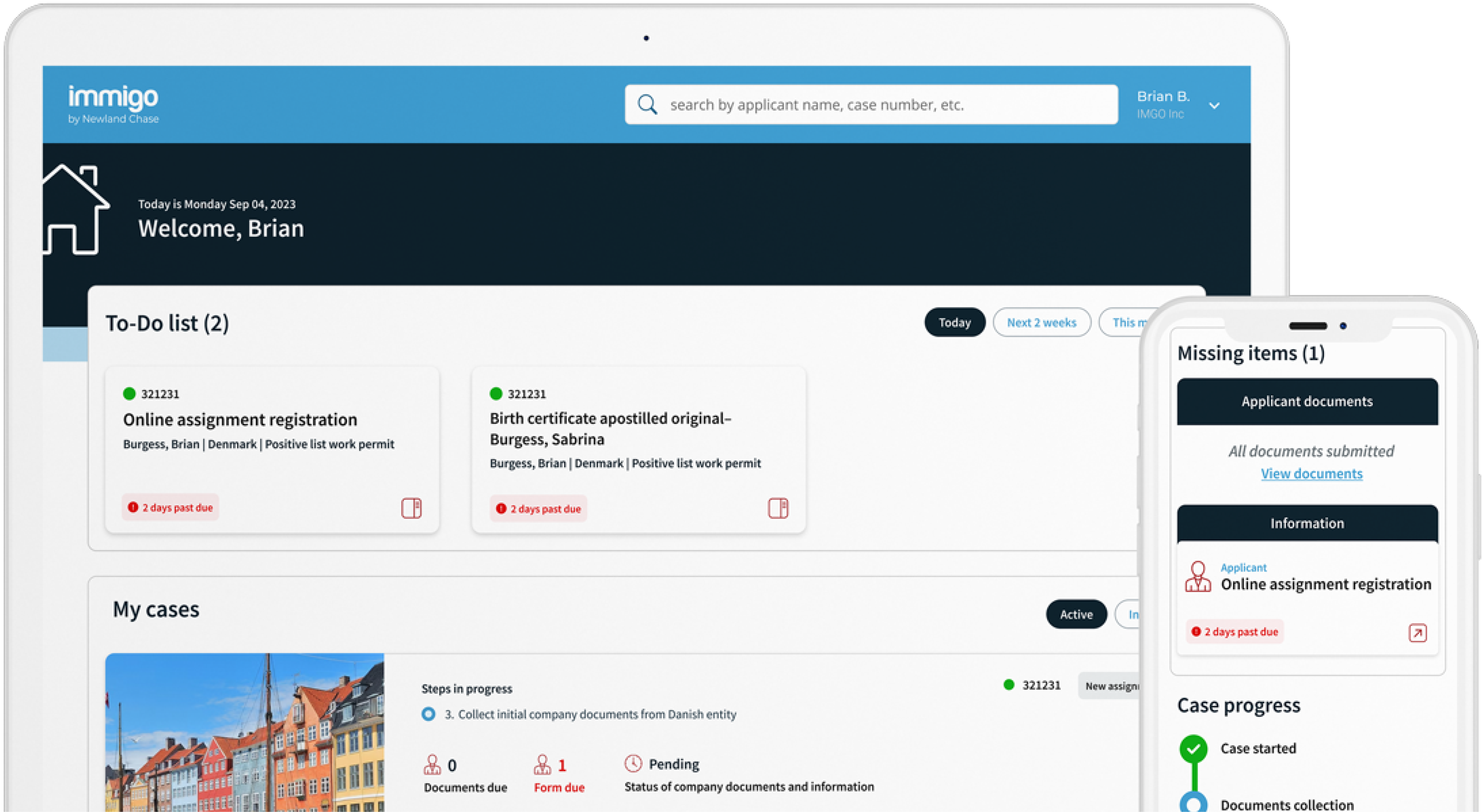Get The Visibility Your Company Needs
Reduce compliance risks and mobility costs while managing individual and project-related travel with ImmiSMART: the solution that unifies your travel and mobility programs.
How HR Execs Should Measure Productivity in the Age of Remote Workplace
December 21, 2023
With the age of remote work in full swing, HR executives face new challenges when measuring workplace productivity. Traditional methods no longer suffice, making way for modern techniques that cater to globally distributed teams. Interestingly, several studies reveal that even with the shift to remote working, many leaders report an increase in productivity. So how should HR pros redefine and measure workplace productivity in this era?
This article dives deep into the nuances of these methods, weaving in the unique challenges and opportunities presented by immigration and global mobility.
Defining workplace productivity
Before diving into measurement techniques, let’s start by defining workplace productivity. Productivity does not equate to business output; rather, it encompasses the balance between effective time management, the well-being of employees, and the quality of work produced.
And, with the rise of global teams, the very nature of employee productivity has transformed, and is now influenced by factors like immigration and global mobility.
Traditionally, HR measured productivity through hours clocked in and tangible results tied to a specific task performed within those hours. Work productivity today is more about outcomes, the ability to juggle multiple tasks simultaneously, and the efficiency with which they’re achieved. The focus has shifted from sheer volume to the quality of work and economic performance of output.
Recent surveys and labor statistics show that remote workers face unique challenges affecting productivity in the workplace. The average worker spends a significant portion of their day navigating the challenges of remote collaboration. By addressing these common productivity challenges head-on, HR execs can foster a work environment conducive to high productivity.
Set KPIs
Setting Key Performance Indicators (KPIs) remains a cornerstone to gauge productivity growth. With remote work, KPIs need adjustments. For instance, rather than tracking hours spent, assessing the quality of knowledge work and project completions might be more relevant. Businesses can foster a productive virtual workplace and ensure employee engagement by setting clear, attainable KPIs.
For gauging and improving workplace productivity, some of the most effective methods are reviewing the following:
- Technology usage patterns
- Completion rates of specific tasks
- Quality of work efficiency in projects
- Output quality over fewer hours
- The positive impact of results, not just the results themselves
- Adaptability and efficiency in navigating time zones and cultural nuances
Schedule consistent check-ins
In the age of remote work, consistent and efficient communication is paramount. Consistent check-ins provide valuable insights into an employee’s progress, challenges, and needs. Regular catch-ups can mitigate the productivity killer of ineffective communication and keep everyone on the same page, fostering a cohesive team culture.
Regular check-ins save valuable time by:
- Addressing ineffective communication early
- Highlighting where employees work best
- Discussing tasks, goals, and job responsibilities
- Offering an opportunity to address the root cause of any potential issues.
- Providing a platform to celebrate successes and share best practices to increase productivity
Emphasize time management
Poor time management is a significant productivity impediment. Encourage employees to prioritize their to-do list, break tasks into specific actions, and avoid multitasking. In a recent survey, the average worker admitted spending valuable time in unproductive meetings. Thus, it’s crucial to optimize the scheduling of meetings to ensure that they bring valuable insights without hampering the flow of work.
Remote work offers both the luxury to save time from commuting and the challenge of managing it across borders. Productive employees know how to manage their time. For greater productivity, it’s essential to:
Set goals: Define what needs to get done by day’s end.
Schedule only essential meetings: Value the precious time of global teams by scheduling meetings considerately.
Prioritize task management: Emphasize results over hours—encourage employees to achieve more in less time and to honor their personal free time.
Lean on tech: Offer tools and productivity skills training to keep track and allocate to less critical tasks.
Embrace technology and automation
The right technology can boost and improve productivity by automating repetitive tasks and offering analytics on employee performance. HR executives should leverage tools that track productivity stats, share labor statistics, and provide insights to streamline operations.
Consider employee morale and well-being
The link between employee morale and productivity is undeniable. Employees who feel valued and have a conducive work environment typically operate with increased efficiency. The focus should be on tasks and the workforce’s well-being. HR execs should note that overburdening employees can do more harm than good.
- Engaged employees in remote setups often signify greater productivity. Strategies to enhance this include:
- Deep work sessions for focused, uninterrupted work
- Encouraging short breaks, which are essential for rejuvenation
- Cultivating a culture where employees manage their own productivity.
Offer feedback for continuous improvement
In a study, people surveyed highlighted the importance of feedback in a remote setup. Regular feedback helps to:
- Identify areas of improving productivity
- Understand productivity levels across teams and geographies
- Create strategies tailored to specific team needs
How global mobility impacts productivity
One undeniably positive impact of global mobility and the ability to work remotely is broadening the talent pool. Productivity has improved as HR execs continue tapping into a worldwide workforce, merging different workplace productivity techniques from various cultures.
Firms like Newland Chase make this expansion seamless by providing insights into immigration laws, local business cultures, and how they impact workplace productivity stats.
Looking ahead: Is productivity important?
The age of remote work has set the stage for a redefined approach to measuring a business’s productivity. The goal isn’t just to achieve but to do so efficiently, effectively, and in sync with the global rhythm. With the right strategies, businesses can navigate the complexities of this changing world, fostering a productive workplace where employees thrive.
Stay in the loop with Newland Chase
As an experienced immigration specialist, Newland Chase manages all the details and processes required to grow a team globally so leaders can focus on building company culture, expanding markets, and being an example of remote productivity. Contact us for a quote today.




